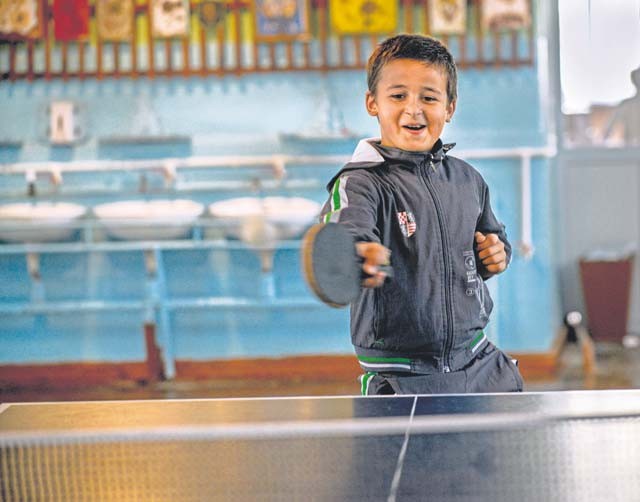
SANATAUCA, Moldova — Sawdust filled the air as power tools buzzed underneath the sweat-ridden faces of workers. After a month of rigorous labor, the foundation for a stronger facility and NATO partnership has been laid.
Airmen from the 435th Construction and Training Squadron and the 52nd Civil Engineer Squadron completed renovations to a gymnasium locker room at Liceul Teoretic Alexei Mateevici School in Sanatauca, Moldova.
“When we arrived here in September, (the locker room) looked like it had been abandoned for more than 10 years,” said Staff Sgt. Daniel Brown, 435th CTS military construction flight structural craftsman. “There were a few lockers, some heating, ventilation and air condition lines, but other than that, it was in complete shambles.”
The Moldova Humanitarian and Civic Assistance program is part of a military and civilian theater security cooperation program the U.S. European Command uses to directly impact civilian communities throughout 17 countries, primarily in Eastern Europe.
While the goal for the HCA project was to improve trust and encourage friendship between partnered nations, the Airmen involved also used the opportunity to practice and improve their skill sets.
“We are using our skills to build a lot here: a locker room, a future for the children and a partnership between allies,” Brown said. “The impact of our work is seen through the support given by the natives and the excited children waiting to use what we built; it makes me appreciate what I do that much more.”
Though the appreciation can be seen on the local nationals’ faces as the Airmen work, one Moldovan student wanted to make sure the Americans heard it as well.
“They have become (some of my) best friends,” said Filip Cobzaru, LTAM student. “We are all looking forward to the renovations; it was a mess before. We are very grateful for the help of the Americans; they have made things a lot better here.”
The collaborative efforts of Airmen from the 435th CTS have not only built a new facility for Moldovan children but has also laid a foundation for friendships around the globe.
For more photos, see Pages 20 and 21.


